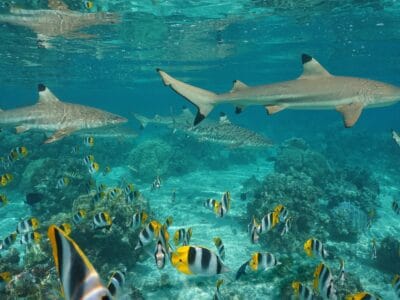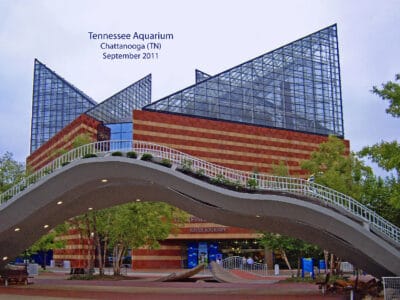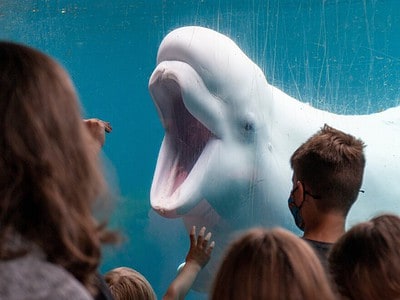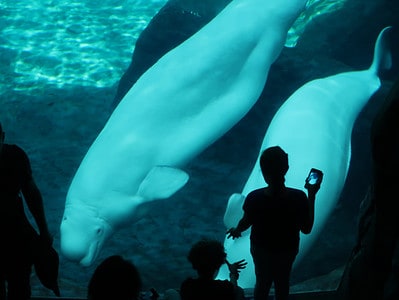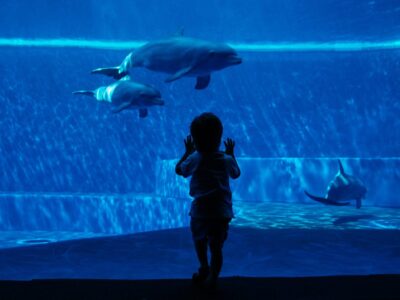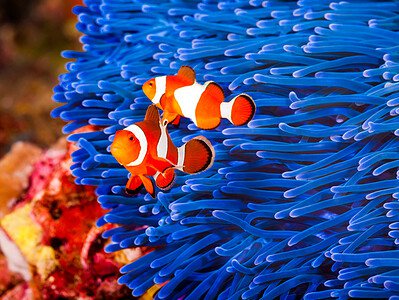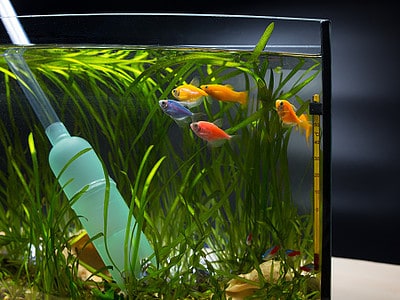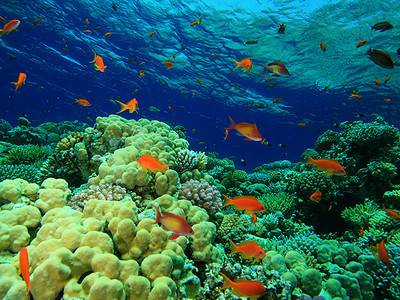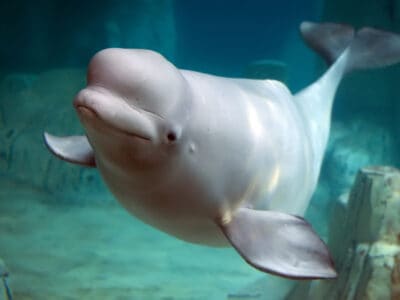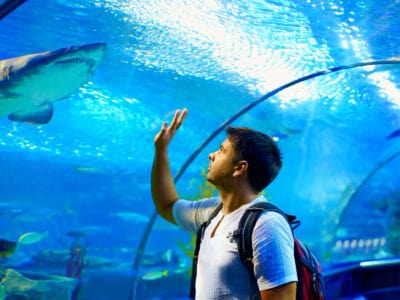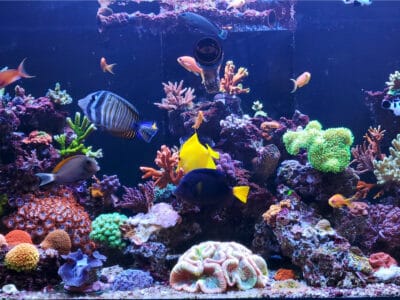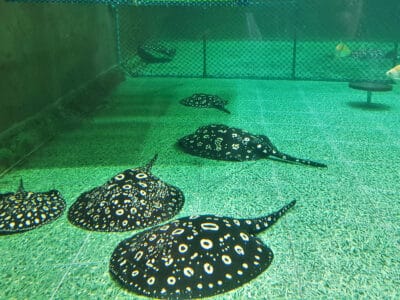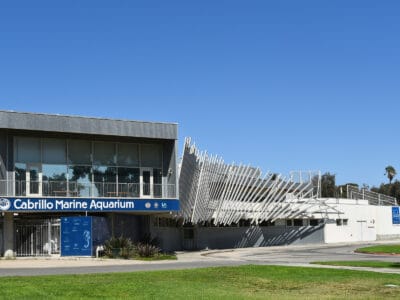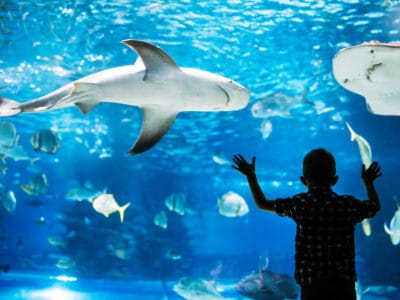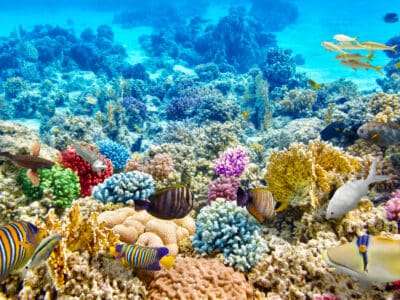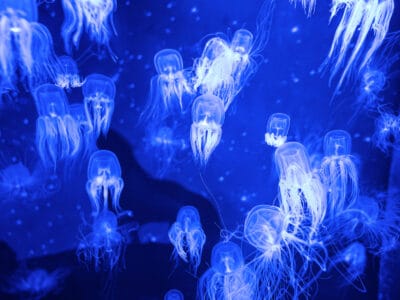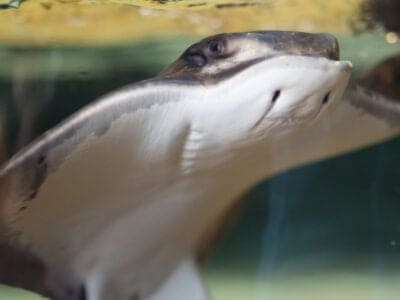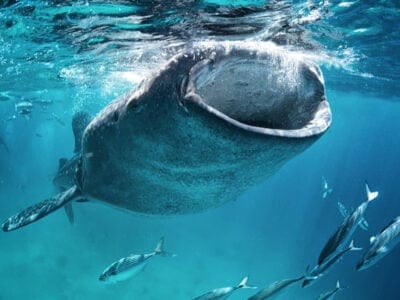An aquarium is, by definition, a vivarium sheltering aquatic animals or plants. So, what’s a vivarium? It is an area that might be enclosed or not where animals or plants are kept and raised. Vivariums – and aquariums – have been created to observe and research aquatic flora and fauna. As such, one side of an aquarium is almost always transparent.
Due to their nature, aquariums often include parts of species’ ecosystems, but on a much smaller scale and controlled by those administering the aquarium. You can think of an aquarium as a national reserve or park, for example – the only difference is that aquariums are fully artificial.
Aquariums can host almost any type of aquatic life: fish, amphibians, reptiles, invertebrates, and any aquatic plant.
Even though they are artificial, aquariums are known for their role in preserving certain species and preventing their extinction. Endangered aquatic lifeforms can live and prosper in a habitat/ecosystem very similar to theirs (albeit smaller in size) without the threat of predators and so on. At the same time, aquariums make for a great tourist attraction, especially for people who are passionate about underwater wildlife but not keen on swimming or diving.
Let’s learn more about aquariums, their history, types, and more. At the bottom of this page, you’ll find a list of famous aquariums, and not only if you want to plan your holiday around one!
A History of Aquariums and How They Came to Be

The principle behind modern aquariums is based on the fact that aquatic plants are placed in a container, be it sealed or not, creating enough oxygen to support aquatic wildlife of any size and at any stage of life.
©NDAB Creativity/Shutterstock.com
Aquariums have existed since antiquity in various shapes and for different purposes. The principle behind modern aquariums, however, was developed in 1850 by Robert Warington. It is based on the fact that aquatic plants placed in a container, be it sealed or not, create enough oxygen to support aquatic wildlife of any size and at any stage of life.
Three years later, the first public aquarium was created by Gosse. It was located in the London Zoo and came accompanied by a manual, The Aquarium: An Unveiling of the Wonders of the Deep Sea (published one year later).
The early concept of an aquarium can be seen in the year 1369 in China. Then, goldfish were kept and maintained in large porcelain tubs, which looked more like soup pots. In time, people got closer and closer to the modern fish bowl shape. Later, in 1666, Leonhard Baldner describes in his book how he kept newts and weather loaches in similar, aquarium-like enclosures (of small size, of course).
There are several records of people keeping personal aquariums up until 1853. However, Warington is still the first individual to develop a stable aquarium, as previous ones were designed for experiments and not for supporting an ecosystem.
Types of Aquariums
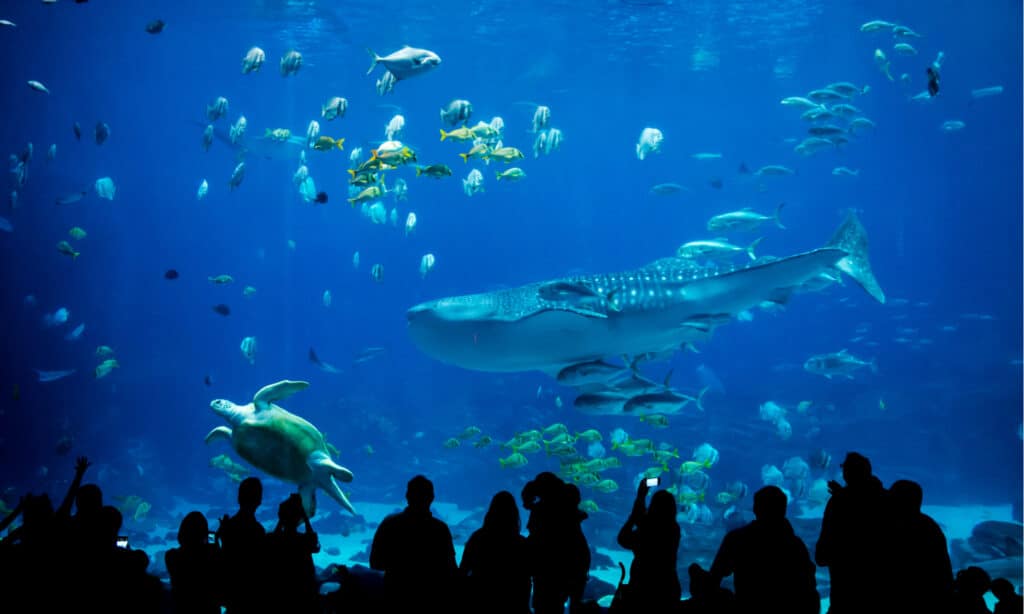
Aquariums can be classified by size, purpose, content, and tank types.
©Jakgapong Pengjank/Shutterstock.com
Aquariums can be quite diverse, to say the least. One of them, appropriately named MacQuarium, is built inside the shell of an old Apple computer. However, it is a personal aquarium. This brings us to the first two types – personal and public aquariums.
- Personal – these can be as simple as the classic goldfish tank. Still, some aquarists go the extra mile when building their personal aquariums. Some can have a capacity of over 80 liters and host various species of fish and plants.
- Public – these can be entire buildings dedicated to certain ecosystems and aquatic species of plants and animals. They can have multiple levels and hundreds or even thousands of liters of water in capacity.
This is the most straightforward classification one could give regarding aquariums. However, we’re here to answer questions – even if they’re not about public aquariums. So, here are most, if not all, the types of aquariums out there!
Types of Aquariums by Size
- Small aquariums—up to 25 liters.
- Medium aquariums—from 25 liters up to 100 liters.
- Large aquariums—from 100 to 250 liters.
- Very large aquariums—these can be public aquariums and have a capacity of over 250 liters. Very large aquariums can be found in shops, institutions, offices, etc.
Types of Aquariums by Purpose
- Decorative aquariums – their purpose is clear: the showcasing of aquatic flora and fauna and the improvement of a space’s decor. There are 10 types of decorative aquariums.
- Outdoor aquariums – these are not equipped with a lid of any type and present lighting fixtures above them. Light is necessary for plants to grow.
- Geographical aquariums – these contain aquatic plants and animals from the same ecosystem, habitat, or part of the world.
- Dutch aquariums – are often referred to as underwater gardens and use decorative elements besides aquatic plants and animals. All Dutch aquariums should feature a natural stone.
- Aquarium biotope – this is similar to a geographical aquarium, as it features only plants and fish specific to a certain place. At the same time, the aquarist tries to replicate the natural ecosystem or environment of said specific fish and plants.
- Species aquariums – these aquariums contain a single species of aquatic animal or fish and have research purposes mainly. Public aquariums rely on this type to avoid the interaction of predatory fish with other species.
- Collector’s aquariums – these aquariums shelter species of fish that are part of the same family.
- Paludariums – such aquariums use above-water and underwater vegetation to create a unique type of aquarium.
- Aqua Terrariums – in these aquariums, amphibians, and fish coexist.
- Aquariums of invertebrates – obviously, only invertebrate aquatic animals and plants live in such aquariums.
- Mixed aquariums – species, ecosystem, and geography do not matter for such aquariums. They shelter a wide variety of aquatic animals and plants. The primary purpose of such aquariums is aesthetics.
- Special aquariums – the purpose of special aquariums has more to do with research and observation. These aquariums are used to raise fish eggs and larvae, put some fish in quarantine, and help fish reproduce.
- Spawning aquariums – are designed for fish breeding and are built out of glass only to avoid contamination with metal.
- Incubator aquariums – their role is to maintain and support the development of fish larvae and eggs. They are similar in construction to spawning aquariums.
- Growing up aquariums – are designed to grow fry fish in large numbers. Fry fish are introduced into growing aquariums when they are 2-3 weeks old. Filtration and aeration systems are mandatory.
- Treatment and quarantine aquariums – consist of only water and are made entirely from glass. A treatment and quarantine aquarium needs comprehensive filtration and aeration systems to support the treatment of ill or diseased fish.
- Aquarium-cultivators – aquarists keep these aquariums to grow live feed for other fish or aquatic animals. Algae, crayfish, and ciliates are usually cultivated in such aquariums.
- Experimental aquariums – aquarists use these to test new aquarium builds or interactions between certain aquatic plants or animals.
Types of Aquariums by Contents
- Saltwater fish aquariums – these contain marine fish only. The main downside is that the aquarium’s water must be filtered constantly. At the same time, different fish species will require different water temperatures.
- Freshwater fish aquariums – contain freshwater fish, mainly from creeks and rivers. One additional aspect of such aquariums is that they can have either warm or cold water, depending on the species they shelter.
- Planted aquariums – these features more aquatic plants than animals. They usually come with a limited number of animals that thrive due to the oxygen-rich environment. In some cases, planted aquariums require more maintenance than regular ones.
- Goldfish aquariums – these are generally personal aquariums containing goldfish and some foliage.
Types of Aquariums by Tank Type
- Standalone aquariums – these are your regular run-of-the-mill fish tanks that can be placed and moved around.
- Cabinet aquariums – such aquariums are often found built into cabinets. They cannot be removed and require increased maintenance.
- Aquarium stands – for better showcasing certain species and information, aquarists will buy a custom tank fitted with a stand.
- Wall aquariums – are common in public aquariums as they can properly showcase the ecosystem, flora, and fauna behind a large glass wall.
- Floor aquariums – we mentioned earlier aquariums with multiple levels. Some have a tunnel or corridor going through one level or floor. The catch is that the entire floor but the corridor is an aquarium, and almost all the walls are made of secured glass.
Famous Aquariums From Across the World
In this section, we’ll include only significant public aquariums, as they are important to any reader. Of course, any aquarist and aquatic life enthusiast has the chance to build an impressive aquarium, given enough time and resources. While you might not be able to shelter large or dangerous fish, we’re certain that goldfish or even a pair of Koi fish will enjoy the home you build for them.
Until then, here are five of the world’s most famous, interesting, and must-see aquariums!
1. Okinawa Churaumi Aquarium, Japan
[Image needed. – Caption: Okinawa Churaumi Aquarium shelters 740 species of aquatic animals.]
Okinawa Churaumi Aquarium is considered one of the best and one of the biggest aquariums worldwide. It shelters 740 species of aquatic animals. It is the perfect opportunity to inspect the gigantic whale shark without having to set sail on the ocean.
There are over 11,000 species of animals present here. The total water volume of the aquarium is over 10 million liters, while the largest tank has a volume of 7.5 million liters. There are three tanks in total – The Kuroshio Sea, The Coral Sea, and The Shark Research Lab. Much cannot be said in words about this impressive aquarium – the 3.5+ million annual visitors say enough.
2. S.E.A. Aquarium, Singapore
[Image needed. – Caption: S.E.A. Aquarium is separated into 10 zones and has 49 different habitats.]
S.E.A. Aquarium is separated into 10 zones and has 49 different habitats. Over 800 species of marine animals live there – more than 100,000 animals in total. The total water volume of this aquarium is 45 million liters, while the largest tank has a volume of 18 million liters.
The aquarium’s main attraction is the Open Ocean tank. This tank has a viewing panel of 118 feet (36 meters) wide and 27 feet (8.3 meters) tall. It is the largest tank and shelters over 50,000 animals. While visiting this aquarium, you will feel like you’re on the ocean floor.
3. Aquarium of Genoa, Italy
[Image needed. – Caption: Aquarium of Genoa features 70 tanks and 32,800 feet (10,000 meters) of exhibit space.]
This is a smaller aquarium in comparison with the two above, with a volume of only 6 million liters. It is, however, equally impressive. There are over 400 species living there, with a total of 12,000 aquatic animals – but not only!
The Aquarium of Genoa features 70 tanks and 32,800 feet (10,000 meters) of exhibit space. Visiting it will introduce you to aquatic mammals, fish, reptiles, invertebrates, amphibians, and birds. If you’re living in Europe and haven’t had the chance to visit any ocean yet, this aquarium shelters dolphins, sharks, sea cows, rays, penguins, seals, and jellyfishes.
4. Dubai Aquarium and Underwater Zoo, United Arab Emirates
[Image needed. – Caption: Dubai Aquarium and Underwater Zoo shelters over 300 species of aquatic animals.]
This aquarium can be found in the infamous Dubai Mall and shelters over 300 species of aquatic animals. Here you can gaze upon rays and sharks. It is not a large aquarium, but it is certainly impressive. It won the “Images Most Admired Retailer of the Year – Leisure & Entertainment” prize in 2012.
Among its central attractions, are a large viewing panel and a tunnel that introduces you to the underwater zoo.
5. Lisbon Oceanarium
[Image needed. – Caption: Lisbon Oceanarium is situated on a pier, which is in an artificial lagoon.]
With one million annual visitors, Lisbon Oceanarium is certainly one famous aquarium, despite its size. The volume of its largest tank is only 5,000 liters. However, the aquarium can still host 450 species of aquatic animals, with a total of 16,000 animals.
The aquarium is situated on a pier, which is in an artificial lagoon. Here you can see penguins, crustaceans, seahorses, octopuses, mollusks, marine plants, and many more. The main tank, with a volume of 1,000 liters, shelters sharks, groupers, rays, moray eels, and barracudas. A large sunfish is one of the aquarium’s main attractions.
Largest Aquariums In The World
| Aquarium | Location | Total Water Volume | Largest Tank Water Volume | Viewing Panel Size (WxH) | Number of Species | Noteworthy Features |
|---|---|---|---|---|---|---|
| Chimelong Ocean Kingdom | Hengqin, China | 48.75 million liters | 22.7 million liters | 39.6mx8.3m | 800+ | Largest underwater dome in the world |
| S.E.A. Aquarium | Singapore, Singapore | 45.2 million liters | 18.17 million liters | 36mx8.3m | 800+ | Giant oceanic manta ray |
| Oceanografic | Valencia, Spain | 41.6 million liters | 7 million liters | – | 500 | 70m tunnel |
| Georgia Aquarium | Atlanta, USA | 37.8 million liters | 24 million liters | 19.2mx7.9m | 700 | 30m tunnel |
| John G. Shedd Aquarium | Chicago, USA | 18.9 million liters | 7.6 million liters | – | 1500 | Arapaima |
| Cube Oceanarium | Chengdu, China | 11 million liters | 10 million liters | 39.65mx8.3m | 400 | 36m tunnel |
| Osaka Aquarium Kaiyukan | Osaka, Japan | 10 million liters | 7.5 million liters | 6mx5m | 740 | Arapaima Gigas and Oceanic Sunfish |
| Churaumi Aquarium | Motobu, Japan | 9.8 million liters | 7.5 million liters | 22.5mx8.2m | 740 | 4 whale sharks |
A List of Aquariums – Notable Mentions
| Aquarium | Location | Number of Species | Noteworthy Features |
|---|---|---|---|
| The Florida Aquarium | Tampa, US | 20,000+ animals | Simulated beach, coral reef community, simulated wetlands |
| Nausicaa – Centre national de la Mer | Boulogne-sur-Mer, France | 1600 | 18m long shark tunnel |
| Vancouver Aquarium | Vancouver, Canada | 300+ | 9 different impressive facilities |
| Aquarium of the Bay | San Francisco, US | 200+ | Sea Lions, sharks, moon jellies |
| The Deep | Hull, United Kingdom | 3,500+ animals | Europe’s deepest viewing tunnel |
| National Aquarium Denmark | Copenhagen, Denmark | 450 | 5 different sections, a school of 3,000 piranhas |
| Marine Life Park | Sentosa Island, Singapore | 1000 | 8 different sections |
| Monterey Bay Aquarium | Monterey, California | 550+ | Seawater system, Kelp Forest exhibit, Open Sea wing |
| Texas State Aquarium | Corpus Christi, TX | 460+ | 16 different themed exhibits |
Thank you for reading! Have some feedback for us? Contact the AZ Animals editorial team.



